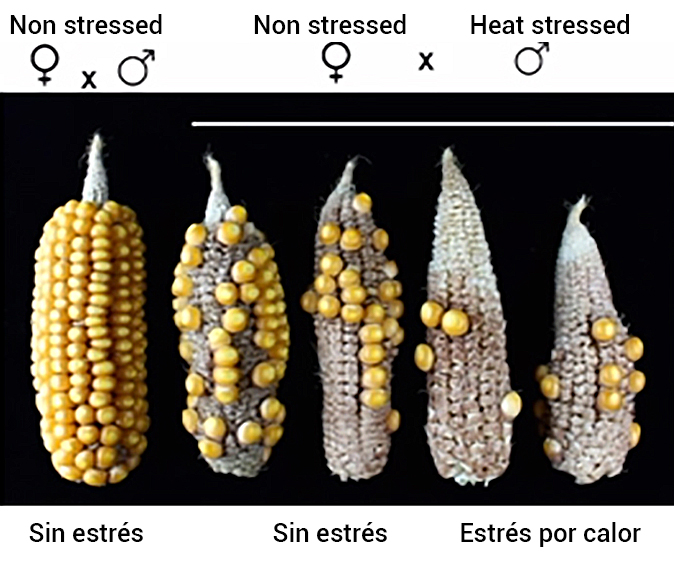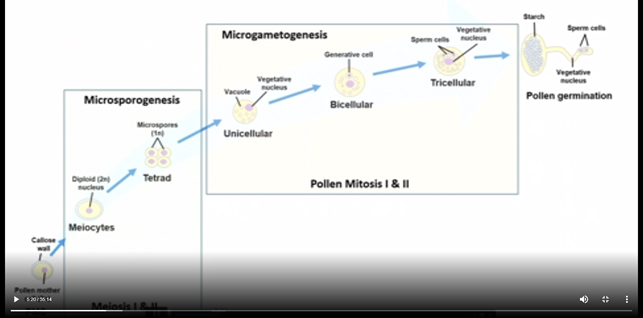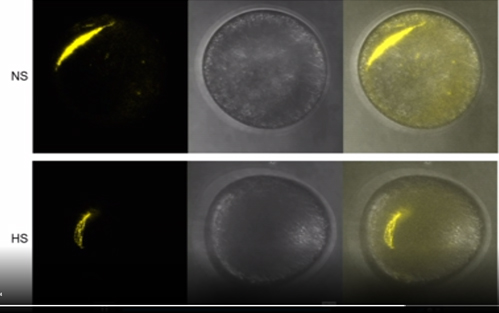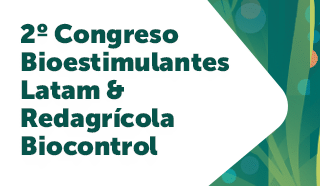10/Mar/2022
#03
SUBSCRIBE TO OUR NEWSLETTER
Suscríbete a nuestro newsletter
Last issue articles
- Biome: the space gaining protagonism in biological strategies for crops
- The export dynamics driving the Mexican biologicals market
- New model developed to evaluate effects of two or more biostimulants combined in a single crop
- Dr. Wagner Bettiol and the biocontrol market in Brazil
- Las propiedades que hacen del Trichoderma un socio clave en la búsqueda de mejores desempeños en los cultivos
- Changes in the new regulation on fertilizers and biostimulants in Chile
- Innovak Global, the expansion of root specialists
Market movers
- Renewable-based nitrogen fertilizer firm raises US$ 20 million in investment round
- Bayer and Ginkgo Bioworks close agreement to strengthen open innovation platform for agricultural biologics
- Argentinean firm Puna Bio: Millions raised to study superbacteria for agricultural use
- Corteva Agriscience signed an agreement to acquire leading biologics company Symborg
- Brazilian study uncovers ants' potential in crop protection
- Huber acquires specialty plant nutrition producer Biolchim
- UPL announces agreement to distribute bioprotector based on orange oil
- ICL and Lavie Bio start strategic collaboration to develop new biostimulants
- Hortitool and Green Smile to organize the Morocco Berry Conference 2022

Research identifies the exact moment when heat stress hits corn hardest
Many of the new biostimulants coming to market seek to improve the resistance of plants to heat shock and the stress generated by high temperatures. However, it is key to know when and where to apply them so that they achieve their objective. In this framework, Professor Kevin Begcy, Ph.D., and his team at the University of Florida are studying how crops respond to heat stress.
Patricio Trebilcok and Francisco Fabres
This has prompted scientists to create bio-inputs that increase the resistance of plants to higher temperatures and heat shocks. However, those who develop and apply these solutions of biological origin must consider that stress does not affect the plant’s stages of development in the same way.
A widely reported phenomenon is the impact of heat on pollen viability, which translates into lower yields. This has been identified in species of the Brassica, in cottonwood, beans and corn.
This last cereal was chosen by Professor Kevin Begcy, Ph.D. and his team at the University of Florida to analyze how high temperatures can impact pollen development. This is because of its importance as food, the amount of genetic tools available for researching the plant, and the enormous amount of pollen it produces, which greatly facilitates research work.
According to the scientist, the studies carried out to date have applied heat stress throughout the pollen’s entire development process, so they do not know exactly when unviability occurs. "In practice, one assumes that there will be an effect on the pollen at any given moment when there is heat” he explains.

Professor Kevin Begcy, University of Florida
But Kevin Begcy's team questioned whether this was the case, and sought to analyze the impact in the plant’s different phases before germination. First, in the microsporogenesis phase, which is the name given to the passage of the pollen’s mother cell to a tetrad of four microspores, which are then released (in sub-stages known as meiocyte and tetrad, meiosis I and II). The second major phase is microgametogenesis, which is when the released spore becomes mature pollen (unicellular, bicellular and tricellular, mitosis I and II).
In the first stage of their work, the researchers from the University of Florida created a methodology that allowed them to isolate a large amount of pollen in specific stages: tetrad, unicellular, bicellular and tricellular. Consequently, carrying out analyzes at a molecular biochemistry, metabolomics and histology level, it was possible to determine the response of each phase to the increase in temperature, the results of which were presented at the World Congress of Biostimulants.
The treatment consisted of subjecting the pollen to 35ºC for 48 hours, which is considered to be moderate to slightly high stress.
Figure 01. Figure 1. Stages of pollen development
[From bottom to top:] Pollen mother cell; Callus wall; Meiocytes; Diploid nucleus; Tetrad; Microspores; Unicellular; Vacuole; Vegetative nucleus; Bicellular; Generative cell; Tricellular; Sperm cells; Vegetative nucleus; Pollen germination; Starch; Vegetative nucleus; Sperm cells.
Initially it was established by means of staining that starch is significantly affected by heat stress, and this macromolecule is vital because it provides energy for germination. Another relevant finding was the degradation of the anther, a structure that contains the pollen and allows its release, meaning that this change undoubtedly causes a difference in the arrival of the pollen to the flower’s female recipient.
THE HEAT IN THE TETRAD STAGE:
MALFORMATIONS AND LESS GERMINATION
Begcy describes what happened when they applied the stress treatment exclusively in the tetrad phase. After being subjected to high temperatures, the pollen suffered malformations. But the question is how much this affected its performance. By using in vitro germination, it was established that the unstressed pollen germinated in more than 80%, while the heat-stressed pollen germinated only in a little more than 20%. Again, a question arises: since corn generates an enormous amount of pollen, will the yield suffer from this reduction?
Before that, Begcy and his collaborators had carried out in vivo, placing the pollen on the ear or female inflorescence of corn (its "hairs" or "beard"). They observed that the stressed pollen germinated with difficulty, while the stress-free pollen completely formed its seeds in the rachis (“cob” among other denominations).
Photo 1. Corn yield strongly affected due to heat stress.

Repeating the same experiment with stressed pollen only at the tetrad stage - which then continued to develop without any restriction – and using it to pollinate the female side of unstressed plants, a dramatic drop in germination was observed. Consequently, it is possible to infer that this specific stage is sensitive to stress due to increased temperature.
THE SEARCH FOR MOLECULAR EXPLANATIONS
A molecular explanation was sought to clarify the cause. The biochemical analysis confirmed a marked reduction of starch in the stressed pollen compared to the normal one. In addition, fluorescein diacetate dye was used, which penetrates the cell membrane and makes it possible to know if the pollen is metabolically active. The conclusion was that starch and enzyme activity are impaired. A transcriptomic analysis was then performed with the main aim of finding which genes were important in the response to heat stress.
Proteins that respond to heat stress were used as markers and it was clearly observed that even when high temperature was applied at the beginning of pollen development, these proteins were still active during maturity. By doing network analysis, kinases were found – important enzymes in fertilization – in addition to many other genes that activate stress response pathways. Two pathways caught the researchers' attention: the energy biosynthesis pathway and the lipid biosynthesis pathway.
The energy biosynthetic pathway starts from starch and sucrose, and both pathways can join to produce adenosine-5'-triphosphate –ATP, the main energy storage and transfer molecule in the cell– via pyruvate or malate. The transcriptomics detected that, under heat stress, three genes or enzymes of this pathway were down-regulated and two up-regulated, leaving the others unchanged. Since transcriptomics did not explain everything, metabolomics was used. The result indicated that glucose and fructose were high while pyruvate was low. Ultimately, starch levels were low because the enzyme capable of converting starch to glucose was downregulated. To compensate for this deficit, the enzyme invertase basically takes over the task by converting sucrose to fructose and glucose, thus maintaining homeostasis in energy production. However later in the energy biosynthetic pathway, two other down-regulated enzymes probably act as a bottleneck, so that a reduction in ATP production is observed.
THE TETRAD STATE IS AFFECTED AT TRANSCRYPTOMIC AND METABOLOMIC LEVELS
Two upregulated and one downregulated enzymes were found in the lipid biosynthesis pathway by transcriptomics. The latter helps convert carbon compounds to lipids. Metabolomics determined decreases in pentadecyl acid, palmitoyl, magaric acid and stearate. It follows then that heat stress in the tetrad state affects both the transcriptomic and metabolomic levels.
“The model we propose – the academic points out – suggests that, basically, when there is heat stress, there is a decrease in starch because ADP-glucose pyrophosphorylase is down-regulated. Thus, the hexose pools increase due to the action of invertase, which tries to keep glycolysis and energy production running. However, other important enzymes are affected, and then there is a reduction in pyruvate, which impacts energy biosynthesis, fatty acids and, finally, affects germination and hinders fertilization."
POLLEN IN A BI-CELLULAR STATE REACTS DIFFERENTLY TO HEAT
So far there is nothing new for specialists, emphasizes Begcy, "only that we find the specific pathways that are affected." But his team wanted to go further and verify whether heat stress at another stage would produce the same effect. They reasoned that excessive heat at field level does not occur constantly, but instead creates peaks of stress, days that are hotter than others. Afterwards temperatures drop and eventually rise again.
The academic shared the results of the bicellular stage. As in the previous case, the pollen was subjected to 35ºC for 48 hours only in that phase. The treated pollen germinated without problems both in vivo and in vitro, as did the unstressed pollen.
To verify that it was not an error in the experiment’s execution, the test was repeated numerous times and obtained similar results. However, the possible resilience of the two-celled state to heat stress was studied with more detail. Different staining and illumination methods were used without finding differences. No significant variations were found in the rate or speed of germination, nor in the maturing of the pollen tube.
At this point, the researchers already thought that heat stress did not affect the two-cell state, since no change was observed in the revised parameters. However, when crossing the pollen that had been stressed in the mentioned phase with rachis that were not subjected to stress, a decrease in yield was detected.
IF EVERYTHING WAS GOING WELL WITH THE POLLEN, WHY IS THERE A DECREASE IN YIELD?
How do we explain this apparent anomaly? What was the negative effect on fertilization due to?
The curiosity of the professionals was again awakened. They repeated the procedure multiple times with no change in the results.
In the bicellular state there is a generative cell and a vegetative nucleus. During the transition to the tricellular state, the formation of sperm cells occurs. The generative cell results in two sperm cells, which, after fertilization, form the embryo and subsequently the endosperm. Taking this into account, the hypothesis raised stated that, if the impact was on fertilization and nothing else, the problem could be due to a defect in the sperm cells. Perhaps, the researchers speculated, the transition from two cells to three cells does not occur. Although the pollen develops normally, the generative cell does not divide.
In order to test the hypothesis, they used a genetically engineered sperm cell marker (YPF, yellow fluorescent protein). There was a noticeable difference in the fluorescent images of sperm cells from stressed and non-stressed pollen (photo 2). There was a partial impact as certain elongation persisted. Successive repetitions gave similar results.
Photo 2. Heat stress during the bicellular stage affects sperm cells.
NS: no heat stress. HS: with heat stress in the bicellular stage.
When germination was tested, pollen that was not stressed developed without issues in the pollen tube, while the one that had been stressed by heat was not able to deliver the sperm cells, which did not manage to leave the grain.
“The division was taking place, but the load was not delivered: the genetic information does not travel through the sperm to the pollen tube. That was the main reason why fertilization was not seen or was impacted,” explains Kevin Begcy. “A little bit of the pollen that was less impacted due to heat stress managed to produce grain. However, most of it was affected.”
THE FOLLOWING ADVANCES WILL ILUSTRATE THE UTILITY OF BIOSTIMULANTS
Subsequently, sperm cells have been analyzed using transcriptomics and proteomics (CRISPR/Cas9), and the team of scientists is currently exploring the genes responsible for the answer to heat stress in detail, as well as the reason why part of the pollen responds differently to that stimulus. Obtaining such information will make it possible to know if biostimulants are able to exert any action and help control the situation.
In summary, Kevin Begcy shares the main discoveries:
-The impact of heat stress on pollen is different depending on the state in which it occurs.
-The tetrad state is susceptible to stress due to transient temperature increase. Energy and lipid biosynthesis are the two main pathways affected.
-The bicellular state does not show morphological alterations after heat stress. However, fertilization is affected, which could basically be due to the fact that the load of genetic material does not travel towards the pollen tube.
Finally, the academic points out that evaluations of heat stress on the ovule are being carried out, but not in maize, since it is difficult to do so, but in rice lines adapted to the Southeast Asian climate. “Surprisingly, the reduction is not as dramatic as in the case of pollen. We see that the female component is a bit more resilient,” he says.
Last issue articles
- Biome: the space gaining protagonism in biological strategies for crops
- The export dynamics driving the Mexican biologicals market
- New model developed to evaluate effects of two or more biostimulants combined in a single crop
- Dr. Wagner Bettiol and the biocontrol market in Brazil
- Las propiedades que hacen del Trichoderma un socio clave en la búsqueda de mejores desempeños en los cultivos
- Changes in the new regulation on fertilizers and biostimulants in Chile
- nnovak Global, la expansión de los especialistas en la raíz
Market movers
- Argentinean firm Puna Bio: Millions raised to study superbacteria for agricultural use
- Corteva Agriscience signed an agreement to acquire leading biologics company Symborg
- Brazilian study uncovers ants' potential in crop protection
- Huber acquires specialty plant nutrition producer Biolchim
- UPL announces agreement to distribute bioprotector based on orange oil
- ICL and Lavie Bio start strategic collaboration to develop new biostimulants
- Hortitool and Green Smile to organize the Morocco Berry Conference 2022
About us
Biologicals Latam es una revista digital de Redagrícola que informa de manera especializada sobre la intensa actividad que se está desarrollando en el espacio de los bioinsumos para la producción agrícola. Esta publicación es complemento del Curso Online de Bioestimulantes y Biocontrol y las conferencias que este grupo de medios realiza en torno al tema.





